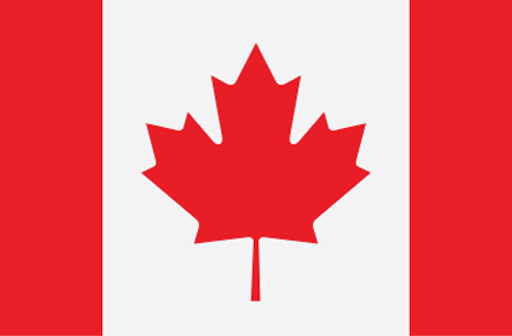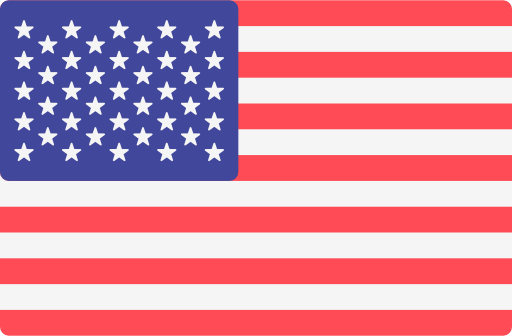Covid 19 British Columbia
Coronavirus (COVID-19) Pandemic Outbreak in B.C.: Situation Updates and Responses
A close look at the COVID-19 situation in British, Canada, including its territorial impact and the provinces’ key approach to mitigate the crisis.
The novel coronavirus (COVID-19) continues to spread at an alarming rate worldwide, including Canada and its provinces. The province of British Columbia is facing the eleventh month of the global coronavirus (COVID-19) pandemic.
British Columbia, with a population of approximately 5.1 million, has confirmed COVID-19 cases, recoveries, cases under public monitoring, and deaths since the pandemic started. As the number of cases surges, the province of B.C. is currently dealing with a concerning number of COVID-10 cases over the first weekend of November.
B.C. Coronavirus Outbreak
The numbers of infections continue to grow at an unprecedented rate. The new confirmed cases this month are the highest that the province of B.C. has ever recorded so far.
Dr. Réka Gustafson, British Columbia’s deputy provincial health officer, announced that the province has marked its highest three-day case count since the beginning of the pandemic with 1,120 new cases. This brings the total number of COVID-19 cases in B.C. to 17,149 to date. Of these, 13,035 have fully recovered.
British Columbia is also on its Phase 3 of its four-phase recovery plan, as announced by Premier John Horgan in June 2020. The premier said that the province moved into Phase 3 through the hard work and sacrifice of British Columbians following the guidance of the provincial health officer.
B.C. COVID-10 Case Count and Statistics
Similar to what is happening in other countries and territories worldwide, there would be fluctuations and surges in some communities.
As of the latest figure provided by the BC Centre for Disease Control on November 7, 2020, there are currently 6,888 active cases under public health monitoring. Of the active cases, 107 people are being treated in hospital, 28 of whom are in ICU. COVID-19 related deaths are already 275 across the province.
The majority of these COVID-19 cases are hospitalized in the Fraser Health region while the rest are in the Vancouver Coastal Health region. Most of these cases are connected to people hosting gatherings inside their homes.
The province had already conducted 888,593 tests since the start of the outbreak.
B.C. Coronavirus Situation Update
Among the number of things that Minister Adrian Dix and Dr. Gustafson monitors include how the cases are rapidly changing, timely follow up of cases, the severity of illness, and minimizing death. This will determine if tougher restrictions have to be put in place.
Dr. Gustafson also expressed concern over the shattering records of COVID-19 in the Fraser Health region. While the numbers are worrying, she has faith that the province can handle the situation and calls for more effort from the residents and public health officials.
As cases rise in the Fraser Health region, a new COVID-19 testing centre is being opened in Surrey, B.C., the epicentre for British Columbia’s rising case counts. It is set to open by November 12 and will process between 500 to 800 tests daily.
Dr. Bonnie Henry issues a public health order for indoor and outdoor gatherings at private homes. The order limits gatherings to household members and a maximum of six guests. Safety protocols and practices such as physical distancing, hand washing, wearing masks, are encouraged across the province.
Life in B.C. in the Time of COVID-19
The province moved into Phase 2 of its Restart Plan in mid-May. In this phase businesses reopened with enhanced safety measures in place.
As the province continued to navigate the pandemic and moved into Stage 3, Dr. Gustafon shares that monitoring, testing, and contact tracing serves as the key. She further added the “need to respond with increased effort and focus using all of the public health measures.”
Phase 3 under “enhanced protocols” reopened resorts and hotels, parks, the film industry, and select entertainment venues. This Phase follows a series of various reopening that took place from May to June.
The Public Health Agency of Canada now recommends wearing three-layer non-medical masks with a filter layer. This new recommendation from the Federal government was outlined by Chief Public Health Officer Dr. Theresa Tam. It is the goal of the public health officials to minimize severe illness and death as the communities reopen.
Guidelines for traveling safely within B.C. were also released. This includes adhering to the proper physical distancing of two meters, respecting local travel advisories to remote communities, and pre-planning resources before travel.
COVID-19 Timeline of Key Events in B.C.
Here’s a look at the cases and updates that shape British Columbia since the start of the outbreak.
January 2020.
BC confirmed its first COVID-19 case involving a traveler who recently returned from Wuhan, China. The province was the second province to confirm a case of coronavirus in Canada.
March 2020.
The Lynn Valley outbreak resulted in Canada's first COVID-19 related death. BC also confirms its first case of community transmission.
The province-wide state of emergency was declared by BC Public Safety Minister Mike Farnworth. Local states of emergency were also declared in several municipalities in the Metro Vancouver Regional District.
British Columbian Premier John Horgan announced the details of the province-wide emergency-relief plan to mitigate the effects of the pandemic. This includes tax relief, income support, and direct funding.
April 2020.
Provincial health officer Dr. Bonnie Henry announced that B.C. had flattened the pandemic curve as the province had reduced the number of cases.
May 2020.
COVID-19 cases remain relatively subdued in B.C. compared to other provinces in Canada. As such, B.C. had taken steps to reopen the economy and advanced to Phase 2 of the Restart Plan. This allows business establishments, offices, restaurants, retail, and other necessary services to resume operation with social distancing measures in place.
June 2020.
Premier John Horgan and Henry announced that British Columbia had successfully flattened the curve. The province launched Phase 3 of the Restart Plan allowing more openings and easing restrictions on businesses, travel, and recreations. Hotels, resorts, and the film industry also resumed operations. Restrictions especially on gatherings greater than 50 were still in place.
July to August 2020
B.C. had seen a significant spike in the number of coronavirus cases especially among the younger people getting together. The majority of the cases have exposures at events in the community.
Stronger enforcement starts as fines are imposed on people who host large events that violate rules in B.C.
September 2020
The B.C. government shared that the majority of students from K-12 returned to in-class learning and introduced the new COVID-19 testing method for school children. COVID exposures in schools and flights were also recorded.
October 2020.
B.C. is on the 2nd wave of the pandemic but Provincial Health Officer Dr. Bonnie Henry said that the province is still not seeing exponential growth in cases and that the province had relatively controlled the community spread. While safety measures are working in the school, she reiterated the importance of following public health guidelines and safety plans.
MLA Adrian Dix announced the amended Provincial Health Officer order, which limits private residences to six guests.
B.C. in Overcoming the COVID-19 Pandemic
British Columbia’s initial success in managing COVID-19 and flattening the curve in June can be attributed to its preparedness, timely and comprehensive public health response. This includes early testing measures, contact management, mass gatherings, and travel restrictions, social distancing measures, and prevention of “superspreader” events.
The rigorous implementation of anti-epidemic measures and the pursuit of community transmission flare-ups, plus the mid-March spring break were other factors that made B.C. control the spread fairly quickly without burdening the healthcare system.
British Columbia’s officials continue to prioritize the safety of the community. Health officials are working to minimize severe illness and death, protect the most vulnerable, and ensure the capacity of the health-care system.
Road to Recovery
Coronavirus has seriously impacted B.C.'s economy and the everyday lives of people. Similar to what is happening around Canada, B.C. province wasn't spared from the unprecedented job losses that the crisis has caused. It has brought many challenges to the local government, health officials, and the entire community.
The heightened uncertainty brought about by the pandemic affected all sectors of the economy particularly tourism, entertainment, accommodations, food services, and retail.
New rules on socializing indoors have been issued to control the spread of the disease and make contact tracing more manageable. This order includes indoor and outdoor gatherings at private homes with rules that limit the gathering of people to a maximum of 50.
Guidelines for holiday celebrations and social interactions are set in place to ensure the safety of people in the community. Based on the order of the Provincial Health Officer (PHO), the safe six - where gatherings have to be limited to no more than the immediate household plus a maximum of six others - has to be considered.
All British Columbians have a role to play in controlling the spread of the disease. Being cautious through the phases is critical. It is expected that people wear masks in indoor public spaces.
In general, the B.C. government advises its people to:
- Limit contact with people within the bubble.
- Practice good hygiene and space cleaning.
- Keep gatherings small (two to six) people outside the bubble.
- Avoid hugs or handshakes with people outside the bubble.
- Avoid touching your face, eyes, nose, and mouth.
- Maintain about 2 meters of physical distance with others when you are out.
- Wear a non-medical mask or face covering when physical distancing isn’t possible.
- Self-isolate when sick.
- Keep a safe distance from people when you have cold or flu-like symptoms.
- When traveling, make sure to take part in smart, safe, and respectful travel within B.C.
B.C.’s Restart Plan
The impact of the crisis is expected to be temporary. The economic rebound will ensue once the virus dies down.
The B.C. government has created a COVID-19 Action Plan that provides support, tax relief, and direct funding for people, businesses, and services in British Columbia. Premier John Horgan shared that “this action plan focuses on services to protect people’s health and safety, gives immediate relief to people and businesses, and plans for B.C.’s economic recovery over the long term.” The plan also assists businesses to get through the crisis and recover after the crisis.
The federal government is supporting growth through several measures. The government’s COVID-19 Action Plan dedicated $2.8 billion to help people in need and $2.2 billion to assist businesses. Included in the government's stimulus plan are the increased benefits for lower-income households, long-term income support, mortgage payment deferrals options, etc. Also part of B.C.'s action plan includes the $1.5 billion economic recovery measures.
Phase 4 of the Restart Plan has yet to be implemented and is conditional on the global availability of vaccines or treatment. Also, the number of active cases will need to decline before the province recommends its implementation.
British Columbians, including everyone in the province, aren't leaving COVID-19 behind. They are continuously doing their part to protect the progress they've already made. Even if B.C. is experiencing a surge in cases right now, the province remains confident in its fight over the COVID-19 outbreak. Plans for recovery, measures, and responses related to the coronavirus pandemic continue to flow daily.






